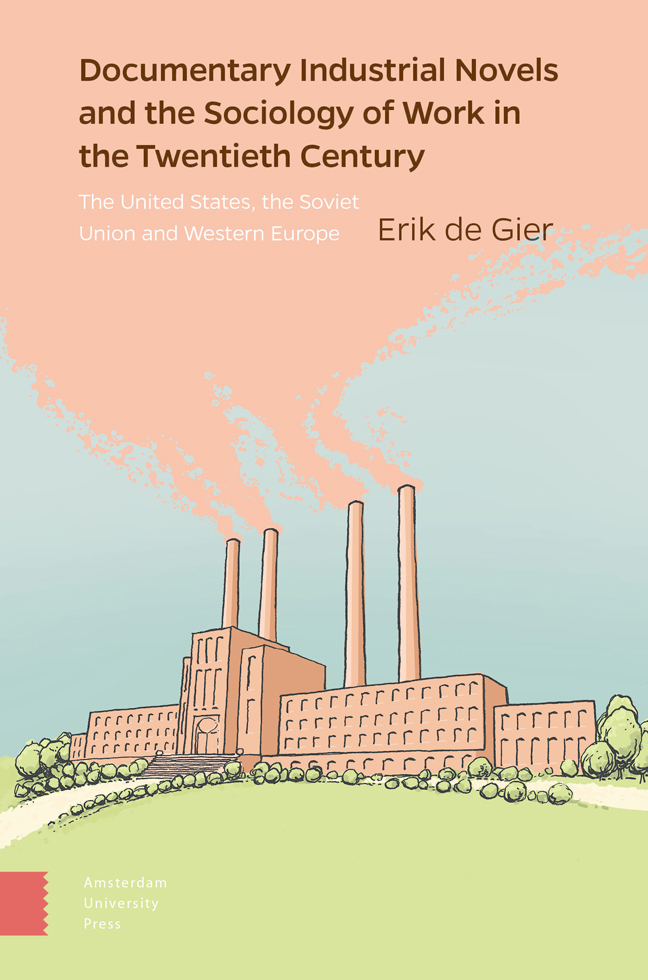 Documentary Industrial Novels and the Sociology of Work in the Twentieth Century
Documentary Industrial Novels and the Sociology of Work in the Twentieth Century Published online by Cambridge University Press: 20 February 2024
Abstract
This chapter deals with American Modernist industrial novels dating from the turn of the 19th century until World War II. It focuses on novels by Upton Sinclair and John dos Passos. Sinclair, an exponent of the ‘Progressive Era’, believed strongly in the ‘American Dream’, encompassing a substantial improvement of working and living conditions for the working class. This was different from Dos Passos. His trilogy U.S.A. was set against the background of the Wall Street crash of 1929 and the New Deal in the 1930s. U.S.A. no longer expressed the strong middle-class reform ideal of the ‘American Dream’. Sinclair's style is documentary, while Dos Passos introduced an innovative experimental style. The sociology of work could benefit from studying both.
Keywords: American industrial novels, American Dream, New Deal, working conditions, Taylorism, Fordism.
Introduction
This chapter deals with a selection of exemplary modernist American industrial novels published in the first decades of the 20th century. These are Upton Sinclair's novels about working and living conditions in Chicago's meatpacking houses (1906), American coal mining (1917), and Henry Ford and his motor company (1937) as well as a major industrial novel, U.S.A. (1938), written in the middle of the Great Depression by John Dos Passos. They were not the only writers of industrial novels in the United States in this period, but in my opinion they are by far the most important and influential, and are representative of the broader context of American industrial relations as they developed over the decades. Also, at the time of the Great Depression a substantial stream of so-called ‘proletarian’ literature evolved. One remarkable exponent of this stream of literature is Jack Conroy's The Disinherited (1931/1991), about working conditions in a Missouri coal mine. Conroy was a young working-class author who pictured his life as a boy in a coal-mining town (Denning, 1997/2010, pp. 200–229; Basset, 2014). According to Denning, proletarian literature was not simply literature by workers, on behalf of workers, or about workers. It was more like a literary formation or movement marked by an alliance of writers, editors, agents, publishers, reviewers, political activists and readers. They met each other in formal and informal clubs, magazines, contests, conferences, schools, public lectures, political rallies, May Day parades, and picket lines. Well-known assembling points at the time were so-called local John Reed Clubs, which spread across the country.
To save this book to your Kindle, first ensure [email protected] is added to your Approved Personal Document E-mail List under your Personal Document Settings on the Manage Your Content and Devices page of your Amazon account. Then enter the ‘name’ part of your Kindle email address below. Find out more about saving to your Kindle.
Note you can select to save to either the @free.kindle.com or @kindle.com variations. ‘@free.kindle.com’ emails are free but can only be saved to your device when it is connected to wi-fi. ‘@kindle.com’ emails can be delivered even when you are not connected to wi-fi, but note that service fees apply.
Find out more about the Kindle Personal Document Service.
To save content items to your account, please confirm that you agree to abide by our usage policies. If this is the first time you use this feature, you will be asked to authorise Cambridge Core to connect with your account. Find out more about saving content to Dropbox.
To save content items to your account, please confirm that you agree to abide by our usage policies. If this is the first time you use this feature, you will be asked to authorise Cambridge Core to connect with your account. Find out more about saving content to Google Drive.